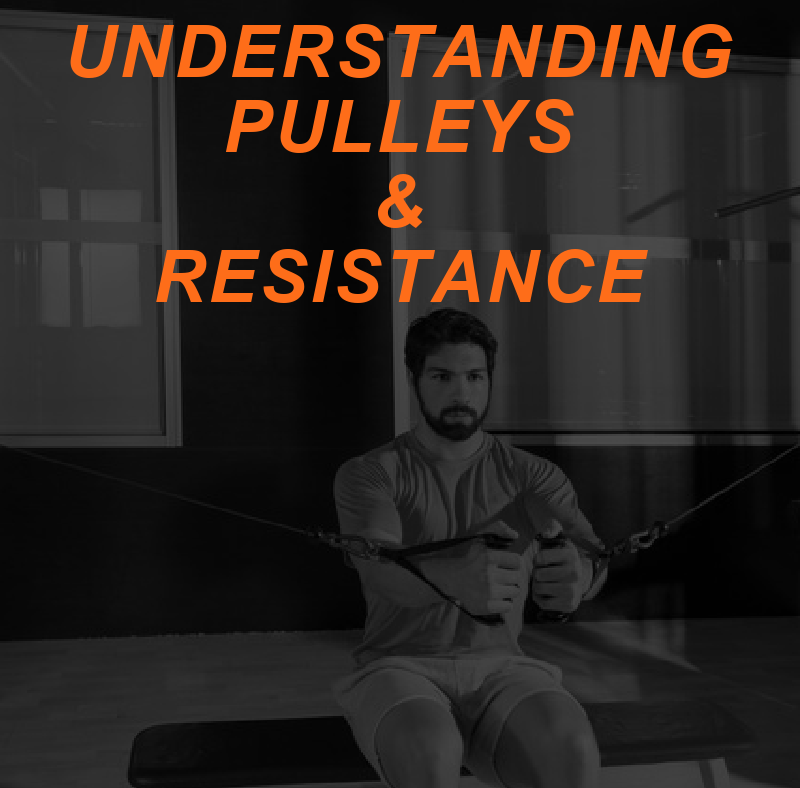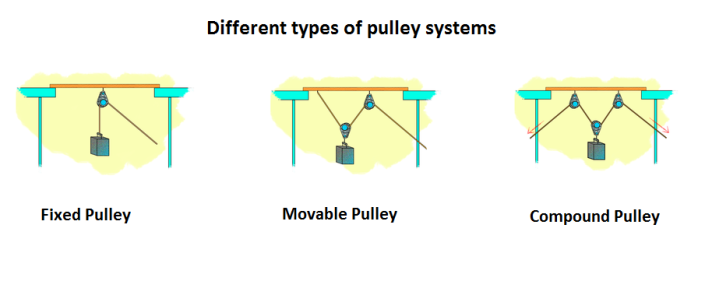
There are many ways to route cables through pulleys, offering both pros and cons in terms of mechanical advantage. Understanding the various types of pulley/cable-based fitness machines can help trainers select the right equipment to match every client’s needs.
Making Sense of Resistance Equipment
Many clients have asked us how the resistance from a certain cable machine equates to barbells/dumbbells, or why one leg press machine differs so much from another in terms of the weight they can move. Furthermore, when a machine’s “weight load” appears as merely 2-4-6-8, etc., depending upon pin placement, how much true weight and/or resistance do these numerical designations indicate?
Returning to Simple Machines and Physics
As more and more sophisticated training equipment appears on the market, threatening to overwhelm both trainer and client, we can return to the nuts and bolts of elementary school simple machines, with some high school physics tossed in for clarification.
A prime example of a simple machine–the pulley–was originally formatted for ease of lifting/moving heavy objects easier. A classic pulley consists of a cable wrapped around a wheel. One end of the cable gets attached to an object; the other end can attach to a motor, or in our case, a person. This facilitates the much-needed mechanical advantage.
Aside from easing burdens, pulleys enable the user to alter the direction of the force used in the lifting process. The dynamics of physics tell us that pulling down on a heavy object makes for an easier lift than pulling up the same object. We have all experienced that in the gym! A pulley system allows us to do just that.
A mechanical advantage of a pulley lies in the number of cables supporting the weight; using multiple pulleys lessens the force necessary to move an object by increasing the amount of cable utilized in the movement. As previously mentioned, all advantages come with a downside. In this scenario, utilizing two pulleys when lifting the weight requires only half as much force as with a solo system, but twice the cable length.
The Pulley Head Game
Cables that move very quickly, without creating too much slack in the system, do so through a mechanical advantage. As the client begins a rep, and the weight stack moves upward, the cable gets extended two feet for every one foot of weight stack movement. As discussed above, this may feel easier for a client to manage, due to the cable’s ability to decrease inertia. However, the trade-off effectively reduces the weight load to half of what the machine weight stack indicates.
Consider for a moment the psychological implications of such knowledge. Does a client wish to focus solely on “strength”, striving for and encouraged each session by the pure poundage he can move? Perhaps another client’s goal leans more towards self-improvement such that any movement change in the weight stack reflects “progress” from the prior week, regardless of the load.
Depending upon which type of client happens to train with you, it may not serve any useful purpose to share the knowledge that no, he truly did not just push 100 pounds, but rather 50. Quantification may or may not figure prominently in someone’s definition of “success”. As long as the trainer understands the dynamics at play, he can work accordingly.
Leveling the Lifting Field
Some cable/pulley exercise equipment allows for a direct 1:1 ratio. This type of design differs from the aforementioned system by structuring a cable to move up through one pulley and directly back down, then attaching to a weight stack. Such a machine works well when the client attempts a leg press, for example. This set-up proves most effective on any exercise that entails a significant amount of resistance. Since the weight pushed/pulled/lifted truly “feels” like the amount on the stack, such movement requires a slower, more deliberate pace.
Pulley Variations
Leave it to the physicists to come up with more than one type of simple machine to assist in load-moving dynamics.

A fixed pulley places the wheel and axle in one place, typically attached to some sort of framework. The weight moves with the cable yet the pulley stays immobile. This variation actually requires more effort than the weight itself! The only advantage to the user? A fixed pulley allows for directional changes with regard to force.
As the name would imply, a movable pulley can accomplish just that–motion– and gets affixed to the weight itself, thereby enabling the pulley to move with the weight. Using less effort to move the load, this system’s downfall means the pulley itself must be lifted/lowered, adding weight in the process.
Most resistance training machines make use of a compound pulley, a hybrid between fixed and movable systems. Once again, we see demonstrated how utilizing half the effort in a lift also requires moving that load twice as far.
Cable-Assisted Lifting versus Free Weights
This debate may rank as one of the top 5 inquiries posed by clients, especially those just embarking upon their weightlifting journeys. All fitness equipment comes designed to build muscle mass by requiring effort against resistance. While lifting with free weights affords the individual an opportunity to practice balance as well as engage the core, all while focusing upon the designated body part (as in the standing military press), cable machines offer different advantages, listed below.
- Practical for use by physical therapists for athletic-related rehabilitation
- Whereas free weights offer resistance perpendicular to the floor, cable machines allow for motion/resistance in many directions
- Typically, cable-assisted equipment eliminates the need for a spotter, ideal for those who prefer a solo weightlifting experience
- Versatility and stability
- By providing continuous tension, training with cable machines causes faster muscle fatigue, desirable in the long run for muscular growth
- Cable machines place the user in the proper anatomical alignment, lessening the chance of injury
You Make the Call
Every trainer has his favorite lifts/moves, and tends to default to these exercises more often than branching out. As you have learned, so much potential and variety await any gym-goer. For optimal building of lean muscle mass, incorporating all three means of lifting – bodyweight-only moves, free weights, and cable/pulley resistance machines — provides the ideal standard.
References:
trustyspotter.com/blog/types-of-cable-machines/
bodybuilding-wizard.com/beginners-guide-to-cable-pulley-machines/
https://sciencing.com/kinds-pulley-systems-simple-machines-8600426.html
https://www.education.com/science-fair/article/moveable/
https://www.teachengineering.org/lessons/view/cub_simple_lesson05
bodyforce.com/glossary/cable-and-pulley-ratios/







